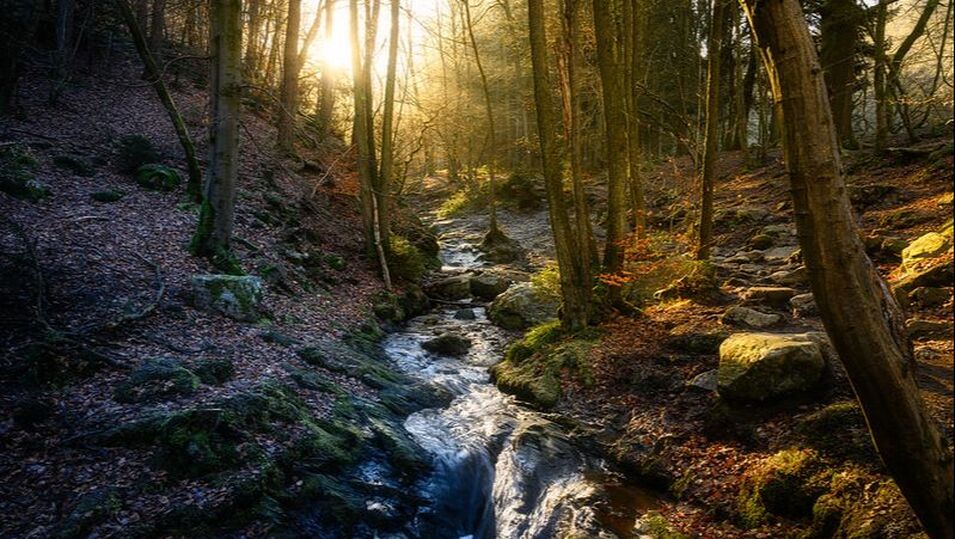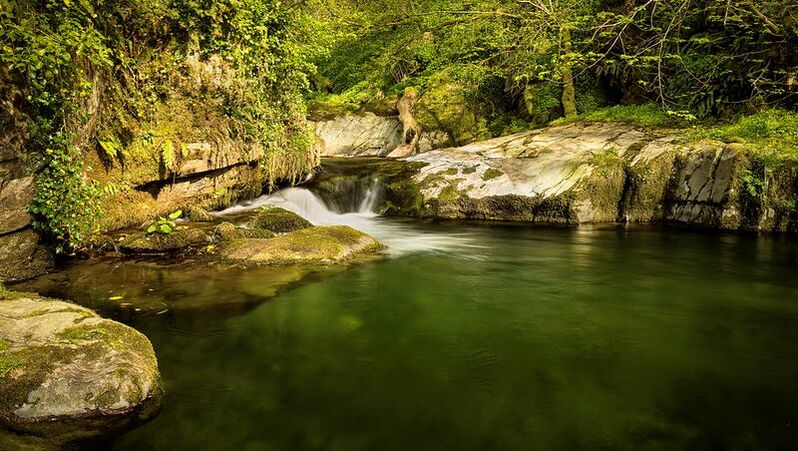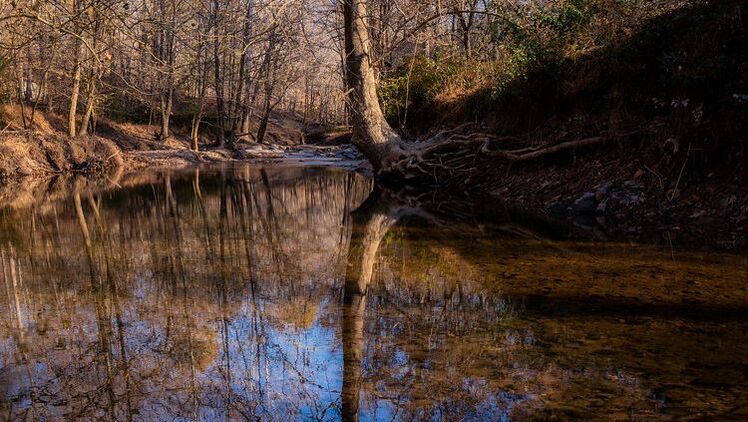Stream and River Restoration Methodologies
Experience teaches us that successful stream and river restoration requires a holistic, multidisciplinary approach focused on understanding the causes and nature of channel instability and the identification of the most effective techniques and tools to address causal factors. Through the use of native materials such as boulders and root wads and utilizing bed manipulation techniques, we look at a rivers backbone to create and enhance naturally occurring fluvial components such as riffles, pools, runs, undercuts, sheers, and point bars These structures are constructed in a manner that allows them to appear and function naturally and remain stable during varying hydraulic regimes.
Introduction to the Field of Stream Restoration
Stream restoration is an ever-evolving field, with more money being spent on enhancement efforts than at any time in the past, it is more important than ever that we understand the steps needed in the creation of riverine and riparian habitat in order to meet all project goals, with an overall net benefit to the environment. Amidst all the enthusiasm however, lurks misunderstandings and ill-conceived notions supported by too many so-called “restoration projects” that are over engineered and do not perform as anticipated. Unfortunately, when restoration projects do fail to achieve their objectives, it threatens both public support and funding available for future restoration efforts.
Factors Contributing to Project Failure
A factor that likely contributes to project failure is the communications gap between the academic and professional communities in which research and practical lessons learned have not been passed between the two constituents. Another issue facing the stream restoration field is the fact that many of the people responsible for project design and implementation lack training in biological systems and proper active restoration techniques. To be successful, it is necessary to obtain a diversity of habitat structures built in line with natural river morphology. Alternating point bars, riffles, pools sheers, and undercuts work together as one dynamic structure to provide the river ecosystem with proper floodplain connectivity, sediment transport, channel sinuosity, helicoidal flow, and hyporheic exchange. We strive to educate our clients and the public on practical, sustainable, and environmentally friendly ways in which our environment can be maintained and cared for.
Tools of the Trade
A plethora of tools and equipment are available to the stream restoration practitioner. Great care and prudent judgment should be exercised though when selecting the appropriate implement because the logistics of each project, the biotic attributes of each aquatic ecosystem, and the geomorphic and hydrologic regime of each watershed are varied.
An excellent and powerful tool employed by many discerning practitioners is the wide-tracked excavator with a hydraulic thumb. With an expert operator highly experienced in working in the water, and full time supervision by an experienced project manager, wide-tracked excavators can effect significant salutary change. It is imperative, however, that the operator and supervisor be well versed in the technical aspects of fluvial mechanics and hydraulic engineering. The ultimate goal of the excavator work is to restore and enhance channel morphology, such that it facilitates the restoration of natural processes and functions (e.g. natural scour and deposition, gravel sorting, etc.), while minimizing detrimental construction impacts.
An excellent and powerful tool employed by many discerning practitioners is the wide-tracked excavator with a hydraulic thumb. With an expert operator highly experienced in working in the water, and full time supervision by an experienced project manager, wide-tracked excavators can effect significant salutary change. It is imperative, however, that the operator and supervisor be well versed in the technical aspects of fluvial mechanics and hydraulic engineering. The ultimate goal of the excavator work is to restore and enhance channel morphology, such that it facilitates the restoration of natural processes and functions (e.g. natural scour and deposition, gravel sorting, etc.), while minimizing detrimental construction impacts.
Techniques
Bed Manipulation
This method builds pool/riffle sequences by selective movement of stream bed material. Streams can lose these important aquatic habitats due to upstream impacts (e.g. ill-conceived dams, bridges, and weir structures), and can therefore benefit from the rebuilding of the features. Bed manipulation (commonly referred to as “dig and pitch”) reorganizes the native elements in the stream to favor trout and their food base organisms, thereby allowing the stream to reach its full potential as a trout fishery.
In addition to an increase in aquatic biodiversity, the restoration of appropriate channel morphology helps to create a healthy riparian zone through the enhancement of floodplain connectivity. This method involves enhancing the stability of the banks, while narrowing the width of the stream. This increases the depth of the water and provides cooler temperatures for aquatic life.
The enhancement of pool depth also helps to improve hyporheic exchange, which moderates temperature fluctuations. This facilitates natural biogeochemical processes to improve spawning habitat for fish. Building point bar deposits with an adequate slipface also provides a sloped surface for moving the sediment through the system, establishing a setting for riparian vegetation.
Point bar deposits also increase the complexity of the stream channel by redirecting the thalweg, increasing sinuosity and hyporheic exchange to promote natural scour and sediment transport within the helicoidal (spiral) flow of the channel. In most cases, natural adjustments in channel morphology and flow dynamics of the created stream are expected. However, it is important to keep in mind that a certain amount of erosion and adjustment is natural and essential for the maintenance of instream habitat diversity and hydraulic complexity.
The ultimate goal is to improve the habitat quality and diversity, increase the carrying capacity of the stream system for fish and macroinvertebrates, and restore healthy floodplain connectivity. This translates into better fishing opportunities.
In addition to an increase in aquatic biodiversity, the restoration of appropriate channel morphology helps to create a healthy riparian zone through the enhancement of floodplain connectivity. This method involves enhancing the stability of the banks, while narrowing the width of the stream. This increases the depth of the water and provides cooler temperatures for aquatic life.
The enhancement of pool depth also helps to improve hyporheic exchange, which moderates temperature fluctuations. This facilitates natural biogeochemical processes to improve spawning habitat for fish. Building point bar deposits with an adequate slipface also provides a sloped surface for moving the sediment through the system, establishing a setting for riparian vegetation.
Point bar deposits also increase the complexity of the stream channel by redirecting the thalweg, increasing sinuosity and hyporheic exchange to promote natural scour and sediment transport within the helicoidal (spiral) flow of the channel. In most cases, natural adjustments in channel morphology and flow dynamics of the created stream are expected. However, it is important to keep in mind that a certain amount of erosion and adjustment is natural and essential for the maintenance of instream habitat diversity and hydraulic complexity.
The ultimate goal is to improve the habitat quality and diversity, increase the carrying capacity of the stream system for fish and macroinvertebrates, and restore healthy floodplain connectivity. This translates into better fishing opportunities.
Sediment Transport
A seminal concept in fluvial geomorphology is that a stable stream channel must have the right slope and channel geometry to efficiently transport its sediment load. Providing that a functioning floodplain is available to the stream, a stable channel is neither degrading nor aggrading under most flow conditions. A new methodology that incorporates this concept is being taught in workshops at several universities. The modeling of sediment transport is challenging, and the application in the field is limited; still, this technique holds tremendous potential for increasing the success of restoring streams. As sediment transport theory advances, so too will its utility and applicability for the design of stable stream channels. The incorporation of sediment transport dynamics into stream restoration will help reduce the probability of catastrophic project failure (e.g. channel avulsion) and result in increased public confidence in supporting and funding restoration.
Goals and Monitoring
Many stream restoration projects never clearly define a set of goals before the implementation phase begins, and often, very little long-term monitoring to evaluate project success occurs. It is critical that the initial design and overall goals of a stream restoration project be based on site-specific reaches of dynamic, undisturbed and healthy rivers as models for measuring success. To ensure the advancement of the science of stream restoration and to ensure public/client satisfaction, it is important to conduct post-project assessments. Typically, however, both the public and private sector lacks the funding necessary to carry out quantified, robust monitoring efforts. Consequently, restoration practitioners must evaluate the success of projects based on anecdotal reports from fishermen and clients, and cursory monitoring analyses.


